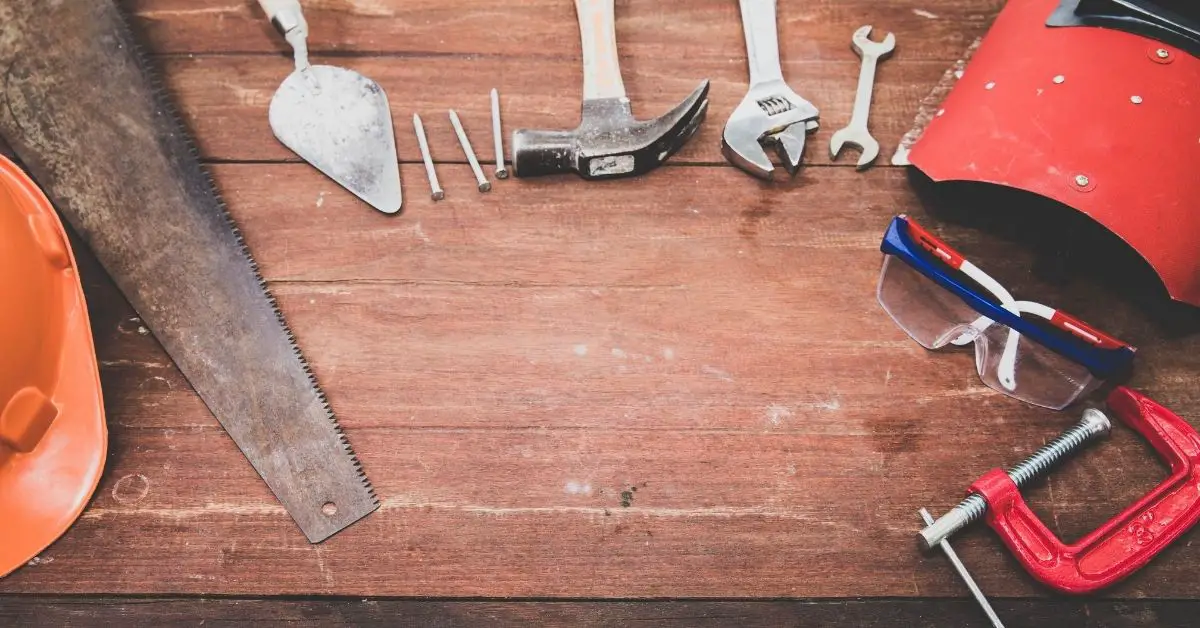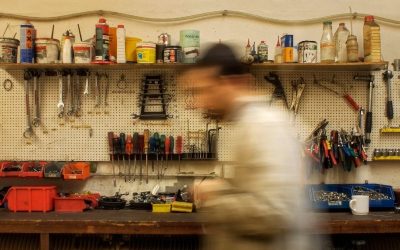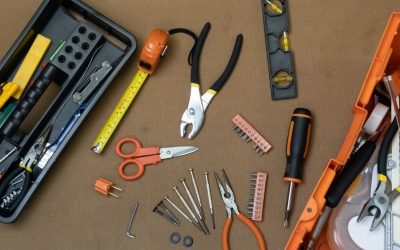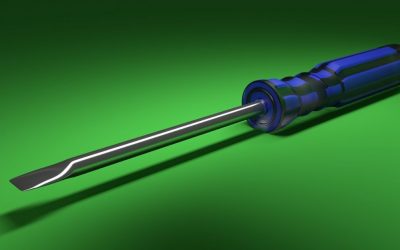Share

- Types of Hand Tools
- 1. Hammer
- 2. Saw
- 3. Screwdriver
- 4. Pliers
- 5. Tape measure
- 6. Pry bar
- 7. Crowbar
- 8. Clamps
- 9. Ratchet and Wrench
- 10. Allen Keys
- 11. Axes
- 12. Screwdriver Set
- 13. Chisel
- 14. Vise
- 15. Scissors
- 16. Knife
- 17. Shovel
- 18. Level
- Check The Quality
- Check The Size Of Hand Tools
- Check On The Functionality Of Tools
- Make Sure You Find A Hand Tool Set That Will Last For Years To Come
- The Comfortability Of Hand Tools
You may not think that there are many types of hand tools, but with the help of this blog post you will know what type to use for any project. We will go in-depth into the different types and how they can be used in your home or business.
Types of Hand Tools
1. Hammer
The most basic hand tool. There are claw hammers, mason’s hammers and ball-peen (or cross pein) hammers available at most home improvement stores.
2. Saw
The standard saw is a hand saw with a blade measuring about 20 inches long by two inches wide. The teeth on the blade of your average handsaw angle toward the handle.
3. Screwdriver
There are two types of screwdrivers: flathead and Phillips, which are named after the inventor of the cross-shaped tip for this type of tool. The size refers to how wide the blade is; usually between one-quarter inch and three-quarters inch in diameter.
4. Pliers
A hand tool used with compound leverage that can be adjusted through a series of swiveling joints, pliers come in several styles including slip joint, locking band (often called vise grip), needle nose or diagonal cutting pliers.
5. Tape measure
When you’re measuring something inside, it’s generally best to use steel tape, but if your project calls for an outside measurement, fiberglass or Kevlar tapes would be better suited as they don’t stretch.
6. Pry bar
A pry bar is a tool with an L-shaped end that combines the functions of hammer and crowbar, allowing you to apply large amounts of force without swinging it like a hammer.
7. Crowbar
A crowbar (also called a wrecking bar) is for prying things apart or loosening them off rather than pulling nails out like the claw on your hammer would do.
It has one end flattened and sharpened, with sometimes an additional smaller tool such as a nail puller that fits into another slot in the handle of the crowbar itself. The other side has either a simple curve to it or wavy edges that are meant to provide grip so you can use both ends effectively without having it slip out of your hands easily.
8. Clamps
Clamps come in many different shapes and sizes, but the most common ones are C-clamps which work using a threaded screw mechanism to tighten them around an object. Many people use bar or pipe clamps because they allow you to secure pieces together without having to hold onto each end while working on it (or waiting for glue and other adhesives to dry).
9. Ratchet and Wrench
A ratchet and wrench are used to tighten or loosen nuts, bolts, and screws. There are many different types of wrenches that can be used by themselves (like the monkey wrench) but when you want more torque than your hands alone could provide it would be best to use a socket set with an air compressor so you don’t have to keep removing them from one bolt each time you need some extra force behind it.
10. Allen Keys
Allen keys are hex-shaped keys that fit into the head of a screw or bolt, which is also known as an Allen drive. They often come in sets with multiple different sizes to allow you to tighten bolts without having them slip out of place easily.
11. Axes
Axe heads come in many different weights, with some being better suited to chopping wood while others are best for more precision cutting. The ax head itself can be made out of metal or plastic depending on which type you buy; there is also a wide range of handle styles and lengths so they can fit your preferences perfectly.
12. Screwdriver Set
Screwdrivers typically have either square-shaped or Phillips crosshead tips that allow them to go into the screw easily without slipping out due to their shape. They usually consist of flatheads (or straight) ones, but these two types are by far the most commonly used when it comes to DIY projects around the house.
13. Chisel
A chisel is a woodworking tool that has either one or two flat blades with sharp edges for cutting, carving, and trimming. They come in many different shapes depending on what you are using them for; there are also other types of chisels that have special uses such as the mortise chisel which allows you to cut away at mortar joints between bricks or tiles.
14. Vise
A vise is a large clamp that can be mounted to a workbench or table, with many different types of jaws which allow it to hold objects in place for various purposes. There are also vises that can be mounted to the wall or floor for doing things such as metalworking, woodcutting, and drilling.
15. Scissors
Scissors are a very common hand tool that consists of two metal blades close together which you can use to cut things like paper, wire, and fabric. They come in many different sizes and weights depending on the purpose they are meant to be used for.
16. Knife
A knife is a metal blade that curves around at the end to form a handle, with many different types of knives having their own special uses. The most common type used by DIYers would be utility knives which have blades made out of either steel or tungsten carbide for longer-lasting sharpness and strength.
17. Shovel
When it comes to digging holes in the ground, you can use two main tools: spades (which typically have square ends) and shovels (which usually come in round shapes).
Shovels tend to be better if you want something more precise while spades offer more leverage when pushing into harder soil. You should also consider whether your soil will require less effort from being wetter or drier before deciding which tool to use.
18. Level
A level is a long, thin tool that has either bubble levels or markings for showing you when something if perfectly horizontal. They are used mainly to make sure things like walls and floors remain straight over time because it’s easy to slowly lean them out of place without realizing.
Buying Guide: How To Choose The Best Hand Tools
Check The Quality
When buying hand tools take a look at the quality of what you are buying. You want your hand tools to last not just for now but also in years down the road if possible, so buy something that is high quality and will be able to handle any job you throw at them throughout their useful life span.
Check The Size Of Hand Tools
The size of hands tools also matters when it comes to choosing which ones are right for you or someone else who will be using them on projects around home or work.
If they have small handles, then people with larger hands may not feel comfortable holding onto them while working. Can smaller-handed individuals use these types without struggling either due to the uncomfortable grip resulting from improper sizing user’s hand sizes and tool’s handle size.
Check On The Functionality Of Tools
In addition to finding a tool with the right fit, consider looking for tools that are meant to do what you need them for as well.
There is no point in buying something if it is going to break after one use or not be able to accomplish its intended task properly enough without making things more difficult on whoever will end up using it down the road either now or later to depending on who they buy this particular tool from and how long ago they bought it initially before needing another replacement eventually.
Make Sure You Find A Hand Tool Set That Will Last For Years To Come
When thinking about buying hand tools whether new ones or used ones try your best to look around online at different types of hand tools that are available for sale and then compare costs of a certain type of tool to the next highest priced one before putting in an order.
If you can find something cheaper than what they were asking for, it might be worth buying that instead of how much money is saved when looking at different brands or similar types of hand tools.
The Comfortability Of Hand Tools
Make sure when choosing hand tools that they are comfortable to use for your or someone else’s hands. If the tool is meant for left-handed people but it hurts their hands even after trying different grips, you may need to look elsewhere instead of just expecting them to get over discomfort to complete a job around home or work.
The best thing about finding exactly what you want at an affordable price compared to buying something more expensive than needed will be saving money rather than spending so much on unexpected costs later down the road too.
Who Uses Hand Tools?
Not only can hand both men and women use tools but these types of tools are also meant for people with all levels of experience when it comes to home improvement or work-related jobs too.
There is no reason why someone should not buy a tool if they need it whether that means just one more set than what they currently have in their possession already.
How To Take Care Of Hand Tools?
After you have bought the hand tools that work best for your or someone else’s needs, be sure to take care of them properly. Keep track of where they are and put them back in their designated place when not using them so there is no chance something can happen to it such as losing one out on accident while working either at home or outside too.
If the tool doesn’t come with a case, consider investing in one separately before putting it away until next use to keep everything safe and secure from harm whenever possible down the road.
How To Keep Hand Tools From Rusting?
To prevent rust from happening on hand tools either when they are in storage or after using them, be sure to wipe down the metal part with a damp cloth and then let it dry completely before putting it away again.
If you do this each time after use, there is less likely to be moisture leftover which will cause rust faster than before. Moreover, this is a good way to keep hand tools from rusting, which will make them last for years and decrease the amount of money you have to spend on replacements later.
There are many types of hand tools available for sale depending on what your needs may be. If you do not mind spending a little more money than usual, there is nothing wrong with buying something used but either way make sure to take the time and effort needed to find exactly what you need down the road instead of wasting time by trying different things that don’t work as well.
When you have a lot of hand tools make sure you clean them often to prevent rust from happening which will make everything last longer too.



0 Comments